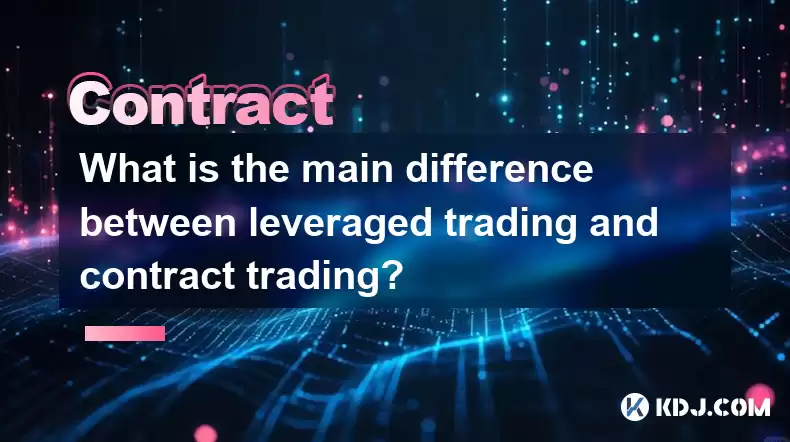-
 Bitcoin
Bitcoin $116700
0.24% -
 Ethereum
Ethereum $3973
4.34% -
 XRP
XRP $3.283
7.68% -
 Tether USDt
Tether USDt $1.000
0.01% -
 BNB
BNB $789.8
2.27% -
 Solana
Solana $176.2
3.31% -
 USDC
USDC $0.9999
0.00% -
 Dogecoin
Dogecoin $0.2238
5.14% -
 TRON
TRON $0.3389
-0.51% -
 Cardano
Cardano $0.7907
4.03% -
 Stellar
Stellar $0.4527
10.02% -
 Hyperliquid
Hyperliquid $41.07
4.27% -
 Sui
Sui $3.794
1.77% -
 Chainlink
Chainlink $19.49
10.40% -
 Bitcoin Cash
Bitcoin Cash $580.9
0.74% -
 Hedera
Hedera $0.2617
4.32% -
 Avalanche
Avalanche $23.41
3.67% -
 Ethena USDe
Ethena USDe $1.001
-0.03% -
 Litecoin
Litecoin $122.4
1.38% -
 Toncoin
Toncoin $3.364
1.49% -
 UNUS SED LEO
UNUS SED LEO $8.988
0.37% -
 Shiba Inu
Shiba Inu $0.00001295
2.82% -
 Uniswap
Uniswap $10.62
5.75% -
 Polkadot
Polkadot $3.922
4.46% -
 Dai
Dai $1.000
0.01% -
 Bitget Token
Bitget Token $4.494
2.15% -
 Monero
Monero $268.0
-1.30% -
 Cronos
Cronos $0.1523
3.68% -
 Pepe
Pepe $0.00001127
4.43% -
 Aave
Aave $285.4
4.85%
What is the main difference between leveraged trading and contract trading?
Leveraged trading uses borrowed funds to amplify positions, while contract trading involves futures contracts to bet on price movements without owning the asset.
Apr 15, 2025 at 07:56 am

Leveraged trading and contract trading are two popular methods within the cryptocurrency market for traders looking to amplify their potential returns. While both methods share the common goal of increasing exposure to an asset, they differ in their approach and mechanics. Leveraged trading involves borrowing funds from a broker to trade a larger position than one's initial capital would allow. This can magnify both profits and losses. On the other hand, contract trading, often referred to as futures or derivatives trading, involves entering into a contract to buy or sell an asset at a future date at a predetermined price. Understanding the nuances between these two can help traders make more informed decisions.
Understanding Leveraged Trading
Leveraged trading allows traders to open positions that are larger than their account balance by borrowing funds from a broker. This is typically expressed as a ratio, such as 10:1, meaning the trader can control a position worth ten times their initial investment. For example, with $1,000 and a 10:1 leverage, a trader could control a $10,000 position. The primary advantage of leveraged trading is the potential for higher returns. However, it also comes with increased risk, as losses can exceed the initial investment.
Leverage is often used in margin trading, where traders use borrowed funds to purchase cryptocurrencies. The borrowed funds serve as a margin, and traders must maintain a minimum margin level to keep their positions open. If the market moves against the trader, they may face a margin call, requiring them to deposit additional funds or close their position to cover the losses.
- Use borrowed funds to increase trading position
- Expressed as a leverage ratio (e.g., 10:1)
- Potential for higher returns and higher risks
- Commonly used in margin trading
- Risk of margin calls if market moves unfavorably
Understanding Contract Trading
Contract trading, also known as futures or derivatives trading, involves entering into a contract to buy or sell an asset at a future date for a specified price. This type of trading is prevalent in the cryptocurrency market, with platforms offering perpetual futures contracts, which do not have an expiration date. Traders can take long or short positions, betting on whether the price of the asset will rise or fall.
In contract trading, traders do not own the underlying asset but instead trade on its price movement. The profit or loss is determined by the difference between the entry price and the exit price of the contract. Unlike leveraged trading, contract trading does not involve borrowing funds directly from a broker but rather trading contracts that represent the underlying asset.
- Trading contracts to buy or sell an asset at a future date
- Common in perpetual futures contracts
- Traders bet on price movement without owning the asset
- Profit or loss based on the difference between entry and exit prices
- No direct borrowing from a broker
Key Differences Between Leveraged Trading and Contract Trading
The main difference between leveraged trading and contract trading lies in the mechanics of how traders gain exposure to an asset. In leveraged trading, traders borrow funds to increase their position size, directly affecting their account balance. In contrast, contract trading involves trading contracts that represent the underlying asset, with profits and losses determined by the contract's price movement.
Another significant difference is the risk profile. Leveraged trading carries the risk of margin calls and the potential for losses to exceed the initial investment. Contract trading, while still risky, limits losses to the amount invested in the contract, as traders do not borrow funds directly.
- Leveraged trading involves borrowing funds; contract trading involves trading contracts
- Leveraged trading affects account balance directly; contract trading affects contract value
- Leveraged trading has a higher risk of margin calls; contract trading limits losses to contract value
- Both methods aim to increase exposure but differ in execution and risk management
Choosing Between Leveraged Trading and Contract Trading
Choosing between leveraged trading and contract trading depends on a trader's risk tolerance, trading strategy, and understanding of the market. Leveraged trading might appeal to those comfortable with higher risks and potential for higher returns, as it allows for direct control over larger positions. However, it requires careful risk management to avoid significant losses.
Contract trading, on the other hand, might be more suitable for traders looking to speculate on price movements without the direct risk of borrowing funds. It offers a way to hedge positions and can be less capital-intensive, as traders can enter contracts with a smaller initial investment compared to the full value of the asset.
- Consider risk tolerance and trading strategy
- Leveraged trading for higher potential returns and higher risk
- Contract trading for speculating on price movements with limited risk
- Both require understanding of market dynamics and risk management
Examples of Leveraged Trading in Cryptocurrency
Leveraged trading is widely used in the cryptocurrency market, particularly on platforms that offer margin trading. For instance, a trader might use 5:1 leverage to trade Bitcoin. With an initial investment of $2,000, they could control a $10,000 position. If the price of Bitcoin increases by 10%, the trader's profit would be $1,000 (10% of $10,000), a 50% return on their initial investment. However, if the price drops by 10%, the trader would lose $1,000, wiping out half of their initial investment.
Another example is trading altcoins with leverage. A trader might use 20:1 leverage to trade Ethereum. With $500, they could control a $10,000 position. A 5% increase in Ethereum's price would yield a $500 profit, doubling the trader's initial investment. However, a 5% decrease would result in a $500 loss, losing the entire initial investment.
- Example: Trading Bitcoin with 5:1 leverage
- Example: Trading Ethereum with 20:1 leverage
- Potential for high returns and high losses
Examples of Contract Trading in Cryptocurrency
Contract trading is also prevalent in the cryptocurrency market, with many platforms offering perpetual futures contracts. For instance, a trader might enter a long position on a Bitcoin perpetual futures contract, betting that the price of Bitcoin will rise. If the trader enters at $30,000 and the price rises to $33,000, they could exit the contract and realize a profit of $3,000 per contract.
Conversely, a trader might enter a short position on an Ethereum perpetual futures contract, betting that the price will fall. If they enter at $2,000 and the price drops to $1,800, they could exit the contract and realize a profit of $200 per contract. However, if the price moves against their position, they would incur a loss limited to the amount invested in the contract.
- Example: Long position on Bitcoin perpetual futures
- Example: Short position on Ethereum perpetual futures
- Profits and losses based on contract price movement
Risk Management in Leveraged and Contract Trading
Effective risk management is crucial for both leveraged and contract trading. For leveraged trading, traders must be aware of the risk of margin calls and the potential for losses to exceed their initial investment. Setting stop-loss orders can help limit losses, and traders should never risk more than they can afford to lose.
In contract trading, risk management involves understanding the volatility of the underlying asset and setting appropriate position sizes. Traders can use stop-loss orders to limit potential losses and take-profit orders to secure gains. Additionally, diversifying across different assets and contracts can help mitigate risk.
- Leveraged trading: Be aware of margin calls and use stop-loss orders
- Contract trading: Understand asset volatility and use stop-loss and take-profit orders
- Both: Never risk more than you can afford to lose and diversify positions
Regulatory Considerations
Regulatory considerations can vary significantly between leveraged trading and contract trading, depending on the jurisdiction. Leveraged trading, particularly in the form of margin trading, may be subject to stricter regulations due to the direct borrowing of funds. Some countries have imposed limits on the amount of leverage available to retail traders to protect them from excessive risk.
Contract trading, while also regulated, often falls under different regulatory frameworks as it involves trading derivatives. Regulatory bodies may require platforms to maintain certain standards for transparency and risk disclosure. Traders should be aware of the regulatory environment in their region and ensure they comply with all applicable laws and regulations.
- Leveraged trading may face stricter regulations due to borrowing funds
- Contract trading falls under derivatives regulations
- Traders should be aware of and comply with local regulations
Market Impact and Liquidity
Both leveraged trading and contract trading can impact the cryptocurrency market, particularly in terms of liquidity and price volatility. Leveraged trading can increase market liquidity as traders use borrowed funds to enter larger positions, potentially leading to more significant price movements. However, it can also amplify market volatility, as leveraged positions may be liquidated during sharp price swings.
Contract trading, especially through perpetual futures, can also affect market liquidity and volatility. The trading of contracts can lead to increased trading volume and liquidity, but it can also result in price manipulation and increased volatility, particularly if large positions are liquidated.
- Leveraged trading can increase liquidity and amplify volatility
- Contract trading can increase trading volume and liquidity
- Both can lead to increased market volatility
Common Questions Related to Leveraged Trading and Contract Trading
Q:
A: The main difference lies in the mechanics of gaining exposure to an asset. Leveraged trading involves borrowing funds to increase position size, directly affecting the trader's account balance. Contract trading involves trading contracts that represent the underlying asset, with profits and losses determined by the contract's price movement.
Q: What are the risks associated with leveraged trading?
A: Leveraged trading carries the risk of margin calls, where traders must deposit additional funds or close positions to cover losses. Losses can exceed the initial investment, making it a high-risk strategy.
Q: How does contract trading work in the cryptocurrency market?
A: In the cryptocurrency market, contract trading often involves perpetual futures contracts. Traders enter into contracts to buy or sell an asset at a future date for a specified price, betting on the price movement without owning the underlying asset. Profits and losses are based on the difference between the entry and exit prices of the contract.
Q: Which trading method is better for beginners?
A: Contract trading might be more suitable for beginners due to its limited risk exposure. Traders can lose only the amount invested in the contract, whereas leveraged trading can result in losses exceeding the initial investment. However, both methods require a good understanding of the market and risk management.
Q: How can traders manage risk in both leveraged and contract trading?
A: For leveraged trading, traders should use stop-loss orders to limit losses and be aware of margin calls. For contract trading, understanding asset volatility and using stop-loss and take-profit orders can help manage risk. Both methods require traders to never risk more than they can afford to lose and to diversify their positions.
Disclaimer:info@kdj.com
The information provided is not trading advice. kdj.com does not assume any responsibility for any investments made based on the information provided in this article. Cryptocurrencies are highly volatile and it is highly recommended that you invest with caution after thorough research!
If you believe that the content used on this website infringes your copyright, please contact us immediately (info@kdj.com) and we will delete it promptly.
- Roman Storm, Funding Effort, and the Looming Defense Retrial: A New York Minute on the Tornado Cash Case
- 2025-08-09 02:50:14
- Crypto's Wild Ride: XRP, Dogecoin, and the Altcoin Surge You Can't Ignore
- 2025-08-09 02:50:14
- Elon Musk, Bitcoin, and the Enduring Power of Approval: A Crypto Love Story?
- 2025-08-09 03:50:15
- Ruvi AI: The Next Big Thing After Ripple on CoinMarketCap?
- 2025-08-09 03:50:15
- Floki Price Surges: Elliott Wave and Fibonacci Setups Point to Potential Gains!
- 2025-08-09 02:30:16
- Pepe Price, RTX (Remittix?) & the $10K ETH Dream: NYC Crypto Chatter
- 2025-08-09 02:30:16
Related knowledge

What is the difference between realized and unrealized PNL on KuCoin?
Aug 09,2025 at 01:49am
Understanding Realized and Unrealized PNL on KuCoinWhen trading on KuCoin, especially in futures and perpetual contracts, understanding the distinctio...

How does KuCoin Futures compare against Binance Futures in terms of features?
Aug 09,2025 at 03:22am
Trading Interface and User ExperienceThe trading interface is a critical component when comparing KuCoin Futures and Binance Futures, as it directly i...

What is the distinction between mark price and last price on KuCoin?
Aug 08,2025 at 01:58pm
Understanding the Basics of Price in Cryptocurrency TradingIn cryptocurrency exchanges like KuCoin, two key price indicators frequently appear on trad...

What are the specific maker and taker fees on KuCoin Futures?
Aug 08,2025 at 08:28am
Understanding Maker and Taker Fees on KuCoin FuturesWhen trading on KuCoin Futures, users encounter two primary types of fees: maker fees and taker fe...

Can you explain the difference between cross margin and isolated margin on KuCoin?
Aug 09,2025 at 02:57am
Understanding Margin Trading on KuCoinMargin trading on KuCoin allows traders to borrow funds to increase their trading position beyond their actual c...

How can I open a long position on KuCoin Futures?
Aug 09,2025 at 02:07am
Understanding KuCoin Futures and Long PositionsOpening a long position on KuCoin Futures means you are speculating that the price of a cryptocurrency ...

What is the difference between realized and unrealized PNL on KuCoin?
Aug 09,2025 at 01:49am
Understanding Realized and Unrealized PNL on KuCoinWhen trading on KuCoin, especially in futures and perpetual contracts, understanding the distinctio...

How does KuCoin Futures compare against Binance Futures in terms of features?
Aug 09,2025 at 03:22am
Trading Interface and User ExperienceThe trading interface is a critical component when comparing KuCoin Futures and Binance Futures, as it directly i...

What is the distinction between mark price and last price on KuCoin?
Aug 08,2025 at 01:58pm
Understanding the Basics of Price in Cryptocurrency TradingIn cryptocurrency exchanges like KuCoin, two key price indicators frequently appear on trad...

What are the specific maker and taker fees on KuCoin Futures?
Aug 08,2025 at 08:28am
Understanding Maker and Taker Fees on KuCoin FuturesWhen trading on KuCoin Futures, users encounter two primary types of fees: maker fees and taker fe...

Can you explain the difference between cross margin and isolated margin on KuCoin?
Aug 09,2025 at 02:57am
Understanding Margin Trading on KuCoinMargin trading on KuCoin allows traders to borrow funds to increase their trading position beyond their actual c...

How can I open a long position on KuCoin Futures?
Aug 09,2025 at 02:07am
Understanding KuCoin Futures and Long PositionsOpening a long position on KuCoin Futures means you are speculating that the price of a cryptocurrency ...
See all articles

























































































